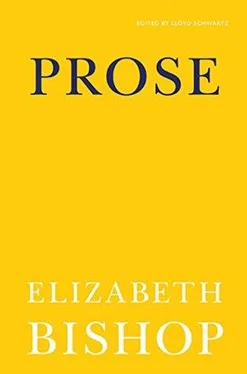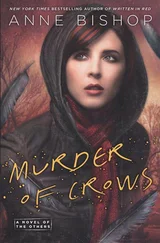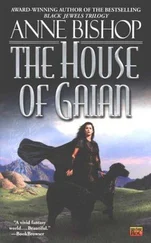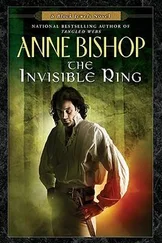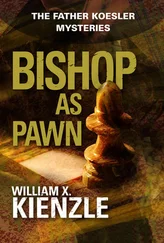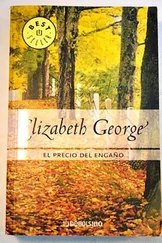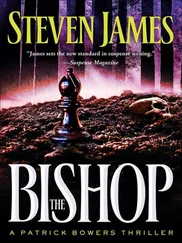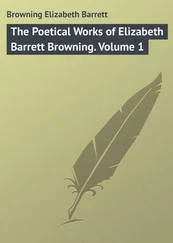It had been Professor Rappaport’s idea, too, to paint the deer in natural colors, and Roger had sat on the front steps most of each day for a week, while his father daubed away with brushes of assorted sizes, several reference books opened at the Colored Plate Section, lying around him on the lawn with stones on the pages to hold them down. The deer was done in two inch stripes of yellow and fawn, and the fawn stripes contained many white spots bordered with black rings. The eyes were dark with green spots, the antlers deep brown, and the scut was painted with phosphorescent paint, because according to the best authorities deer had followed each other by means of watching the tail of the deer ahead, which shone in the dark. Of course at the beginning of every college year, the deer was an object of considerable merriment on the part of the incoming Freshmen: they hung their caps on its antlers, and once, indeed, had dressed it in a complete suit of clothes and a pair of spectacles and labelled it: Old Rappy — but by November the novelty usually wore off. Anyway, the deer stood there firmly, as if to advertise the profession of the man who lived in the house behind him.
When Roger had been staring gloomily at the deer and the trees and the rain for some three-quarters of an hour he suddenly realized that in their place he was staring at a man walking by the path to the house. Not the Professor, but an old man, a country man dressed in a cap and dirty blue jeans and carrying a large-sized straw basket on his arm, with some sheets of newspaper stuck through the handle to keep the rain out. Roger was extremely excited, he had never seen the man before, and he had still the childish belief that things coming in baskets were probably presents for him. He rushed to the door and let the man in.
“Is this Mr. Rappaport’s house?” the old man asked Roger, taking off his cap, but still holding on to the basket. Roger shut the front door quickly so that he had the man inside, at least.
“Yes,” he said in his rather unpleasant way, “and I’m Mr. Rappaport’s little boy. What do you want? What’s in your basket?” He led the way into the parlor.
The old man said, “Well, perhaps you’ll do. Your father’s the man who knows about those animals, isn’t he?”
Roger said he was, and that he, Roger, would most certainly do. The old man sat down, holding the basket on his knees.
“Well, I’ll tell you my boy, I’ve got something here for your father. I’ve found, — by golly, I’ve found a animal. ”
Roger gave an incredulous gasp. Once or twice when he was younger he had tried this same trick on his father, with poor effect. But the old man was pulling the newspapers away from the basket. “There you are,” he muttered and reached in with both hands and dragged out what certainly did look like some sort of animal. Roger almost fainted away. The old man set the animal down on the floor and Roger made as if to snatch it, but he was pushed back onto his chair.
“Leave it alone. It don’t run much. Now look at that. Ain’t that the damndest thing you ever did see? It’s a real honest-to-goodness animal, living and breathing.”
The animal just sat there on the carpet, breathing, certainly, and rather fast at that. It was perhaps two feet long, rather stumpy and rounded, and all covered with a kind of straw-grey fur, very thick and fine. It had a pointed nose and whiskers and close round ears, and extremely large dark eyes that were full of tears. In fact, anyone who knew anything about animals might have felt it was rather pretty — until he looked closely at the tail, which was short and scaly and had a few long hairs on it. Roger didn’t bother to think whether he really took to the animal: it became an object of divinity to him immediately, and he knelt beside it on the floor. He patted its round back gingerly and the animal shed one tear, which was at once replaced by another.
“Where did you find it? What kind do you suppose it is? Will it die?” Dying was the chief characteristic of all the animals Roger had known.
“Well, I was just starting to do my spring plowing and I ran the plow into a sort of little hole and there sat this thing, snug as you please, looking out at me. Must have been there all winter long. I haven’t heard tell of a animal for a good many years now, so I thought I’d just bring it along to your pa to see what he made of it. Well now, if you’ll just sort of keep your eye on it till your pa comes home, why I’ll be getting along.”
The old man got up and took his basket and left the room, but Roger, absorbed in the animal, didn’t pay the slightest attention. He patted it and stroked it and spoke in its round ears and the animal lay perfectly quiet and occasionally shed tears on the carpet. It was rather sad to see Roger’s gentleness and discretion with the creature. Born at an earlier day he would probably have made one of those people who cannot mingle comfortably with their own sort, but in the society of animals became at once charming and lovable. However, as things were, Roger, except for this short while, was destined to go through life never appearing at his best and always rather disliked.
Finally the animal’s tears ceased and it even showed faint signs of pleasure in Roger’s company. It arched its short neck to his hand, and switched its tail around on the floor. Roger vaguely remembered that to be the sign of gratitude on the part of some animal, but he could not think which one. He peered into the creature’s eyes. Should he feed it? And what? Could it understand what he was saying? It seemed rather lifeless on the whole, but papa would be extremely pleased anyway. He waited patiently stroking the creature rhythmically, which was the manner, he had decided, it liked best.
Professor Rappaport had never had even a modest success in his life, and now of course, he had a triumph. He sent the old farmer who had brought the animal twenty-five dollars. In the backyard of the Professor’s house were two little houses with wire pens attached to them where several years ago he had kept one or two other animals, and this one was promptly assigned the larger house. All the professors came to see it first, by invitation, then the student body was allowed to troop through the backyard and stare. Professor Rappaport, though not exactly popular, did come to be a campus character of some stature. He even gave a tea, the most important feature of which was a close view of the animal for all the guests, and a brief lecture on it by the Professor.
1934
The lines are straight and swift between the stars.
— Wallace Stevens
Perhaps to give the above title to a paper is as ridiculous as it would be to make measurements for a suit of clothes and then grow the body to fit them. Bright ideas about how to do a thing are to be mistrusted, and the only bright idea which ever proves its worth is that of the thing itself. The discovery, or invention, whichever it may be, of a new method of doing something old is often made by defining the opposite of an old method, or the opposite of the sum of several old methods and calling it new. And the objective of this research or discovery is rather the new method, the new tool, than the new thing. In the come and go of art movements, movements in music, revolutions in literature, and “experiments” in everything, we often see this illustrated. The modern French composers who devised the ingenious and seemingly pregnant method of using two or three or more keys against each other, where one alone had been used before, are often very disappointing because despite the possibilities suggested by poly-modality and poly-tonality the themes in themselves are meagre and uninteresting.
Читать дальше
